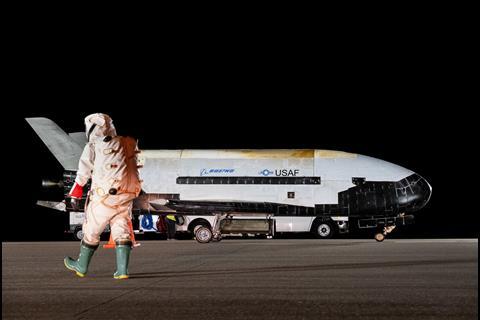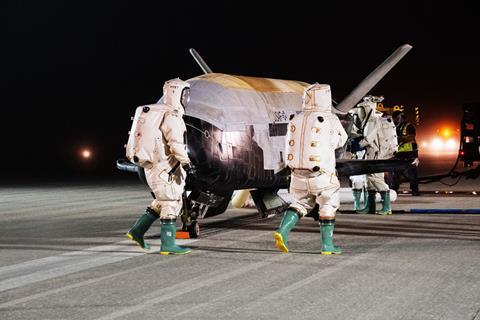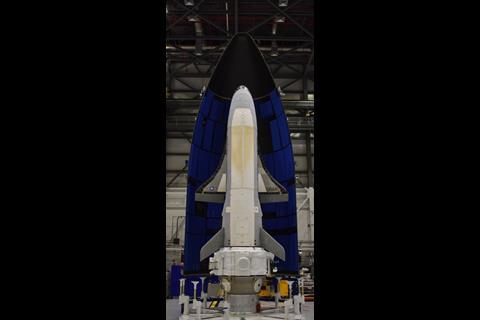A “spaceplane” operated by the US Space Force (USSF) has returned to Earth after completing its sixth mission.
The Boeing X-37B Orbital Test Vehicle (OTV) “deorbited” and landed at NASA’s Kennedy Space Center in Florida on 12 November, the USSF said later that day.
“The X-37B continues to push the boundaries of experimentation, enabled by an elite government and industry team behind the scenes,” says Lieutenant Colonel Joseph Fritschen, X-37B programme director with the Department of the Air Force’s Rapid Capabilities Office.
The spacecraft, which the USSF describes as an “unmanned, reusable spaceplane”, is a long-endurance vehicle primarily used to support scientific experiments for government and private industry partners.
Over six missions, the X-37B has flown 1.3 billion miles and logged 3,774 days in space. The recently concluded mission, dubbed OTV-6, launched from Cape Canaveral, Florida in May 2020, ultimately spending 908 days in orbit.
According to Boeing, OTV-6 hosted several payloads, including a solar energy experiment for the US Navy and a satellite for the US Air Force Academy that still remains in orbit.
“Since the X-37B’s first launch in 2010, it has shattered records and provided our nation with an unrivalled capability to rapidly test and integrate new space technologies,” says Jim Chilton, senior vice-president of Boeing Space and Launch.
Several NASA packages, including one testing the effect of space exposure on various materials and another evaluating the impact of long-term space flight on seeds, were also part of OTV-6.
“Scientists are interested in the seeds’ resistance and susceptibility to space environment-unique stresses, notably radiation,” the USSF says. “The seeds experiment will inform space crop production for future interplanetary missions and the establishment of permanently inhabited bases in space.”
The X-37B, which resembles a miniature version of NASA’s venerable space shuttle orbiter, is the first vehicle since the shuttle with the ability to return scientific payloads to Earth.
Unlike the shuttle, the X-37B is not limited by the resource needs of a human crew, according to the US Air Force (USAF). At the conclusion of a mission, the vehicle “autonomously re-enters the atmosphere, descends and lands horizontally on a runway”.
OTV-6 landed at the same Florida landing facility used by the space shuttle missions.
“This mission highlights the Space Force’s focus on collaboration in space exploration and expanding low-cost access to space for our partners, within and outside of the Department of the Air Force (DAF),” says General Chance Saltzman, Chief of Space Operations.
The USSF is an independent military service, but administratively falls under the DAF, which oversees the USAF and previously managed the USA’s military space efforts.
The X-37B programme was managed by the USAF before the creation of the USSF and still bears USAF livery.






























